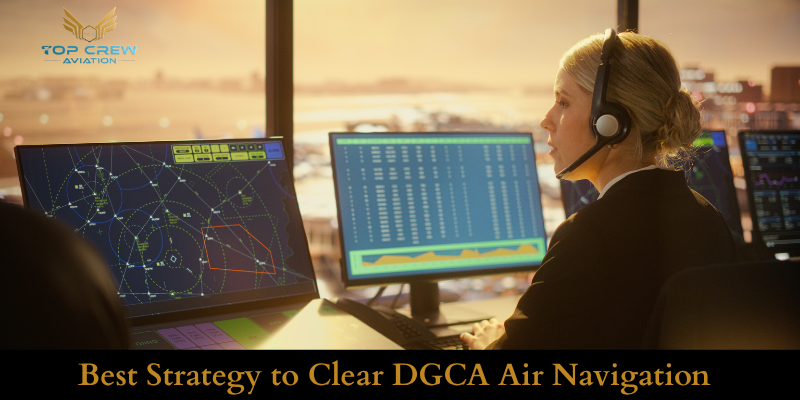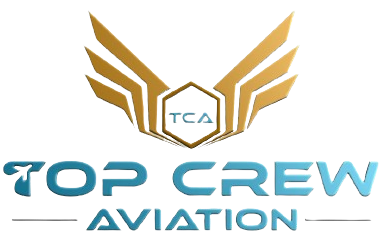
Flying is a science, and navigation is at the heart of it. If you’re preparing for the DGCA (Directorate General of Civil Aviation) Air Navigation exam in India, this subject could make or break your chances of passing on the first attempt. Many pilot aspirants consider Air Navigation one of the most technical and calculation-intensive subjects in the Commercial Pilot License (CPL) syllabus. But with the right approach, you can transform this challenging subject into your strongest asset.
In this in-depth guide, we’ll walk you through everything you need to know—from what the Air Navigation paper includes, to the best books, step-by-step strategies, mistakes to avoid, and how to stay ahead of the curve in 2025.
What Is DGCA Air Navigation?
Air Navigation is the process of planning, recording, and controlling the movement of an aircraft from one location to another. It is an essential skill for any pilot, whether flying visually (VFR – Visual Flight Rules) or instrumentally (IFR – Instrument Flight Rules). In the DGCA CPL syllabus, this subject focuses on:
- Chart reading and plotting routes
- Calculating drift, ground speed, and heading
- Solving wind triangle problems
- Understanding navigational instruments and systems (e.g., ADF, VOR, DME, GPS)
- Performing dead reckoning, calculating track, and bearing
- Interpreting time zones, latitude, and longitude
- Correcting for magnetic variation and compass deviation
This subject demands a solid grasp of both theoretical concepts and mathematical calculations. Unlike rote-based subjects, DGCA Air Navigation expects you to apply logic, interpret diagrams, and perform real-world flight planning tasks.
DGCA Air Navigation Exam Overview
Before diving into strategy, it’s important to understand how the DGCA Air Navigation exam is structured.
| Component | Details |
| Exam Type | Written/Computer-Based (MCQs) |
| Duration | Approx. 2 hours |
| Total Questions | Around 50–70 |
| Passing Marks | 70% |
| Syllabus Coverage | Navigation techniques, calculations, instruments |
The exam questions are mostly scenario-based and focus heavily on time-distance-speed problems, instrument interpretation, and fundamental physics of flight navigation.
Best Books for DGCA Air Navigation
Preparing for the DGCA Air Navigation paper requires not just hard work but the right study resources. Choosing the best books helps you understand complex topics like time-speed-distance, navigation systems, charts, and flight planning more easily.
Here are the top-recommended books for mastering Air Navigation:
- Oxford Aviation – Air Navigation Series: This book is well-aligned with DGCA standards and offers in-depth explanations with diagrams, perfect for concept clarity.
- A. C. Kermode – Navigation: Known for its simple language and well-structured chapters, it’s great for beginners and explains vector-based problems effectively.
- Jeppesen Air Navigation Manual: A professional-grade manual that includes real-world flying scenarios, graphical illustrations, and practical insights, making it ideal for applied learning.
- DGCA Solved Question Banks: These can be sourced from ground schools or trusted online platforms. They are essential for understanding DGCA’s question pattern, commonly asked MCQs, and exam trends.
Pro Tip: Don’t depend on just one book. Use a combination of the above with video lectures, flight planning software, and interactive charts. Visual learning helps reinforce theoretical concepts and makes difficult calculations easier to understand and remember.
Strategy to Clear DGCA Air Navigation in First Attempt
Here is a detailed step-by-step plan designed to help you confidently prepare and pass the DGCA Air Navigation paper on the first try.
Step 1: Create a Weekly Study Plan
Organized preparation is half the battle won. Plan a 6–8 week schedule like this:
Week Focus Area
- Latitude/Longitude, Time Zones, Units Conversion
- Direction Basics: True, Magnetic, Compass headings
- Wind Triangle, Ground Speed, Drift, E6B/CRP-5 Usage
- Navigation Instruments – ADF, VOR, DME, GPS, RMI
- Radio Navigation, Plotting charts, Dead Reckoning
- Practice Previous Year Questions, Topic Revisions
- Full-Length Mock Tests, Error Log Analysis
- Final Revision and Concept Polishing
Keep Sundays free for rest or light revision. Studying with consistency is more effective than cramming.
Step 2: Focus Heavily on Calculations
DGCA’s Air Navigation exam is packed with numerical problems. To score well:
- Practice basic math daily: Speed, Time, Distance
- Learn to draw and solve wind triangle diagrams
- Understand variation and deviation corrections
- Memorize key units: 1 NM = 1.852 km; 1 knot = 1.852 km/h
- Use CRP-5 or E6B flight computers (if permitted in practice)
Tips:
- Always write formulas before solving
- Keep track of sign conventions (e.g., drift angles)
- Round off properly as per aviation norms
Step 3: Daily Practice & Weekly Mock Tests
- Set a target to solve 15–20 MCQs daily
- Try to understand why the wrong answers are wrong
- After every 3–4 days, review your weak areas
- Give one full mock test every weekend under exam conditions
Use online aviation portals or your ground school’s test series. Analyze each test and maintain an error logbook.
Step 4: Strengthen Core Concepts
Memorizing won’t work here. You need complete clarity on:
- Magnetic vs. True North and when to use which
- Heading vs. Track vs. Bearing
- How navigation aids interact (e.g., VOR with DME)
- Interpreting MET charts and plotting courses
Use aviation simulators or apps like ForeFlight, EasyVFR, or SkyVector to practice real-time planning.
Step 5: Revise Smartly
In the final 2 weeks:
- Focus only on your weak zones
- Don’t start new topics unless necessary
- Revisit formulas, solved examples, and shortcut techniques
- Revise notes, flashcards, and solve your error-log questions
Memory Hack: Use mnemonics, visual diagrams, and teach a friend — all proven revision boosters.
Common Mistakes Students Make (And How to Avoid Them)
Many students fail because they:
- Ignore numerical practice
- Memorize without understanding
- Skip mock tests or don’t analyze them
- Study irregularly or without a timetable
- Use outdated or unreliable sources
Avoid these mistakes by following a discipline-oriented, goal-driven study plan.
Why Join a Ground School Like Top Crew Aviation?
Self-study is helpful but not always enough. A good ground school like Top Crew Aviation provides:
- Expert instructors with airline and DGCA experience
- Structured, up-to-date course materials
- Classroom and online guidance for navigation tools
- Regular doubt-clearing sessions and mock exams
They also ensure you’re exam-ready with psychological preparedness and test-day hacks.
Final Thoughts: Turn Navigation Into Your Strength
Air Navigation is not a subject you can master overnight — but with the proper guidance, the correct study materials, and focused preparation, you can absolutely clear it in your first attempt.
Stay disciplined, track your progress, and remember — every wind triangle you solve and every heading you calculate is training your brain for the skies.
Use the right books. Practice daily. Take mock tests. Clarify doubts immediately. Don’t just aim to pass — aim to master.
Ready to Conquer DGCA Air Navigation? Join Top Crew Aviation for expert-led CPL ground school training, updated DGCA courseware, and comprehensive exam guidance. Our students don’t just pass — they rank among the top scorers in DGCA Air Navigation.
Suggestion URL :-
Frequently Asked Questions
No FAQs found.



